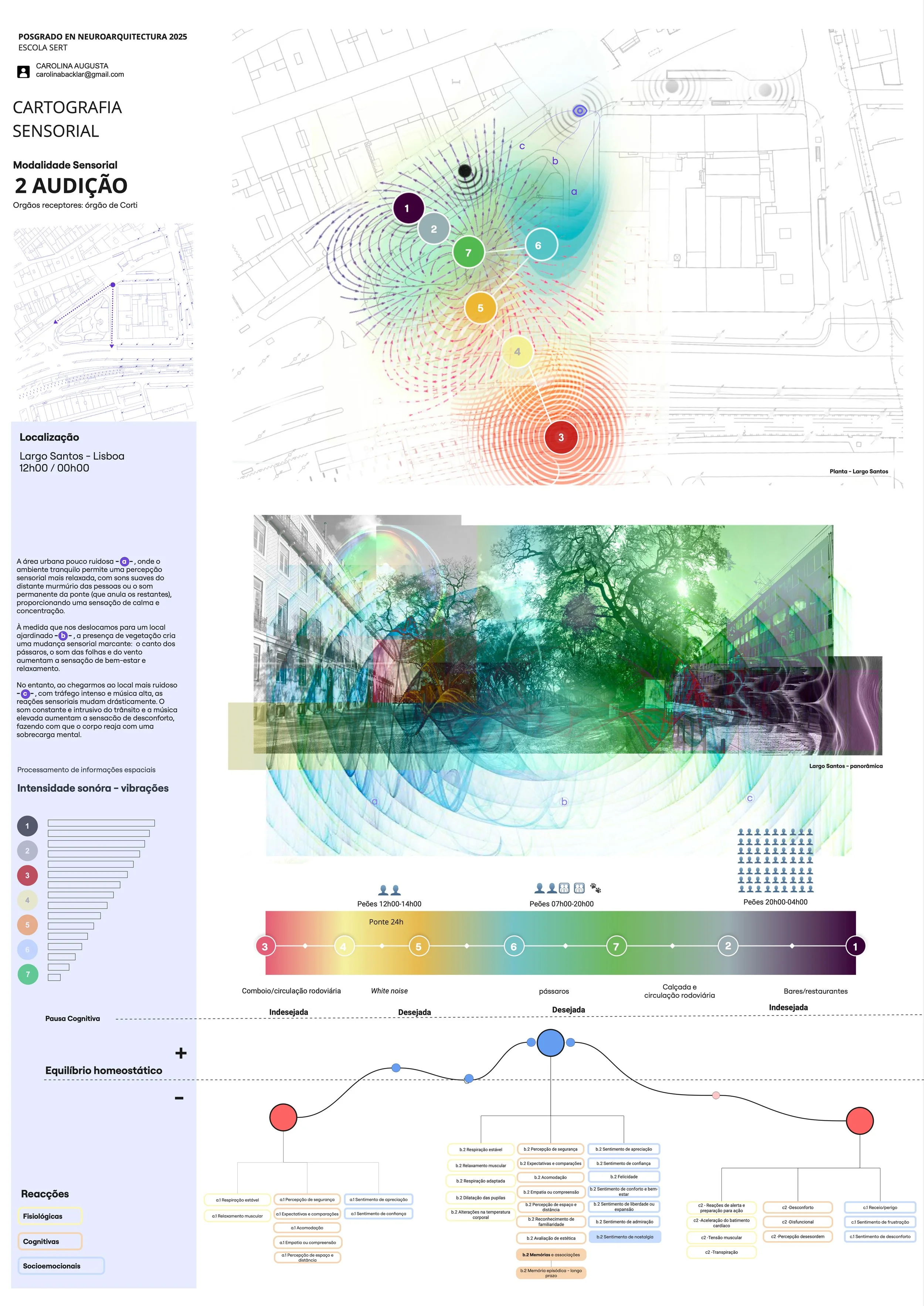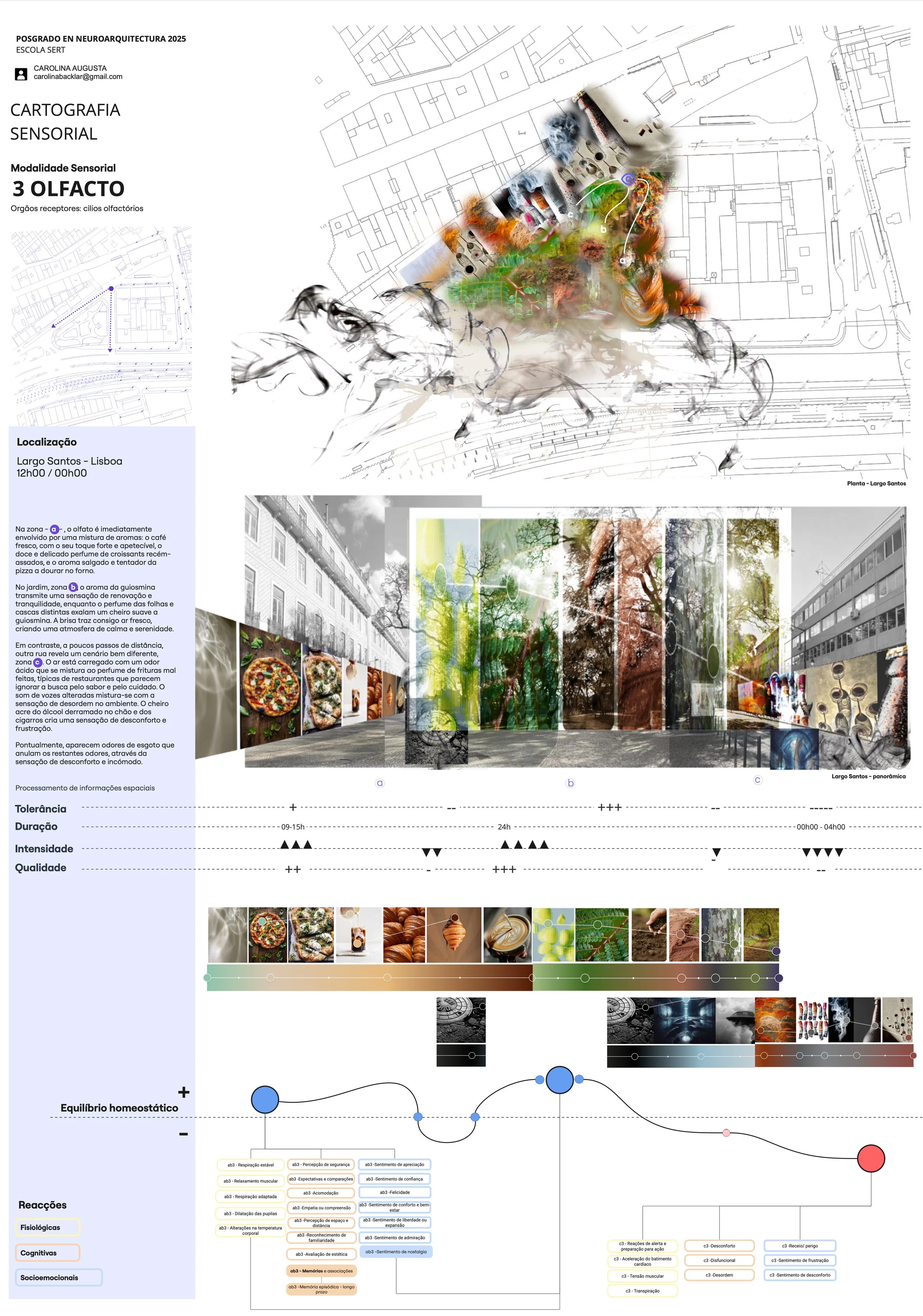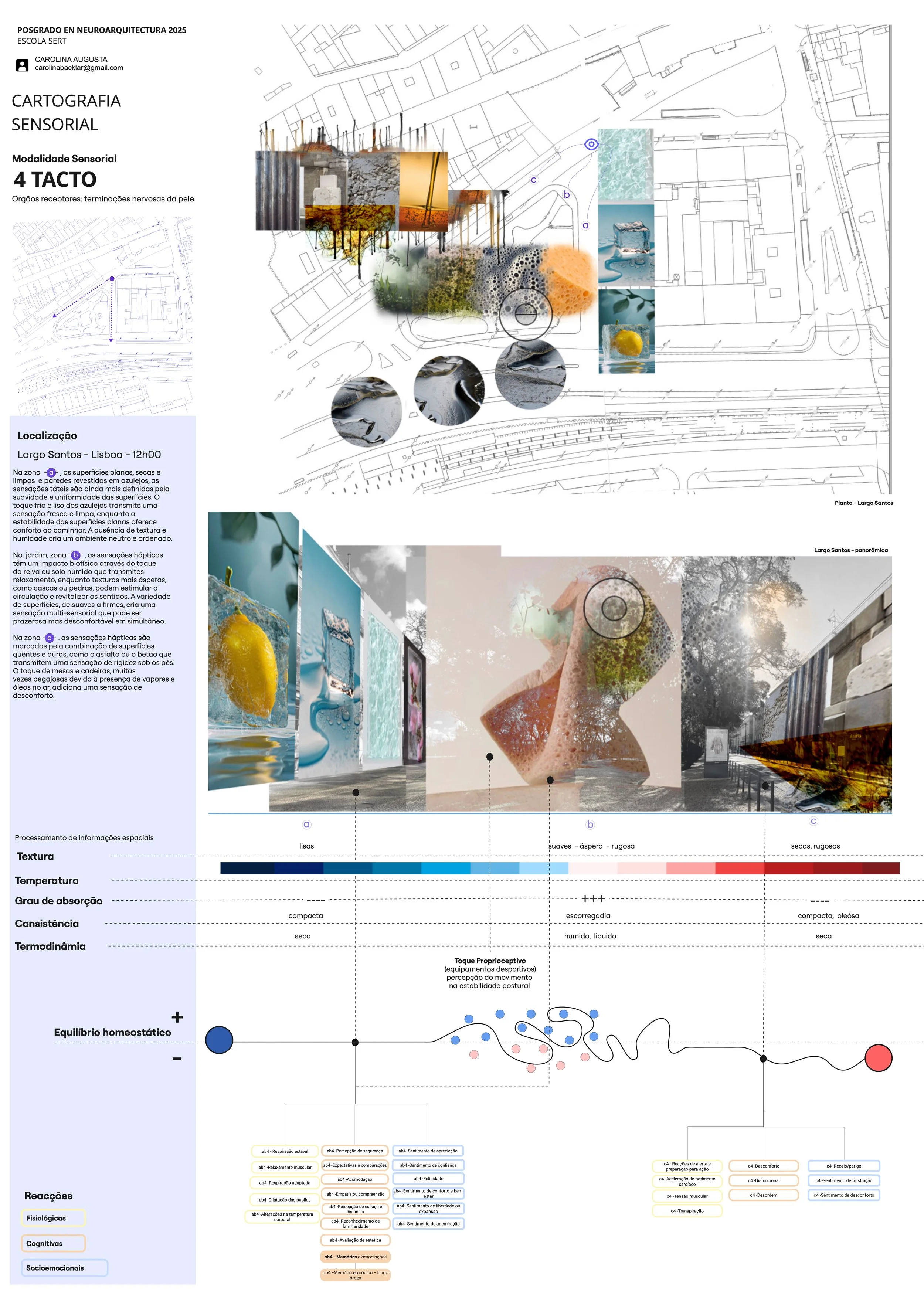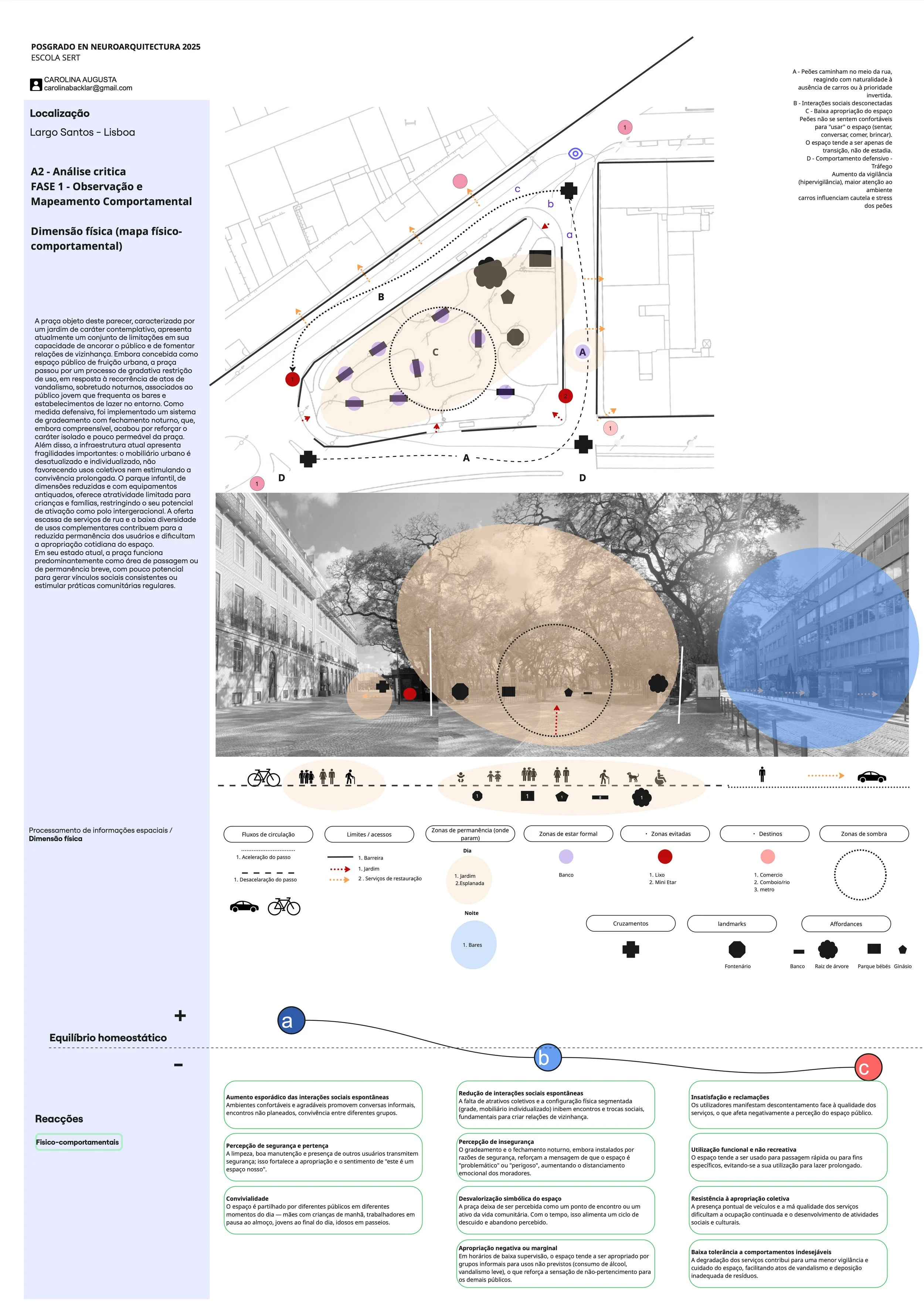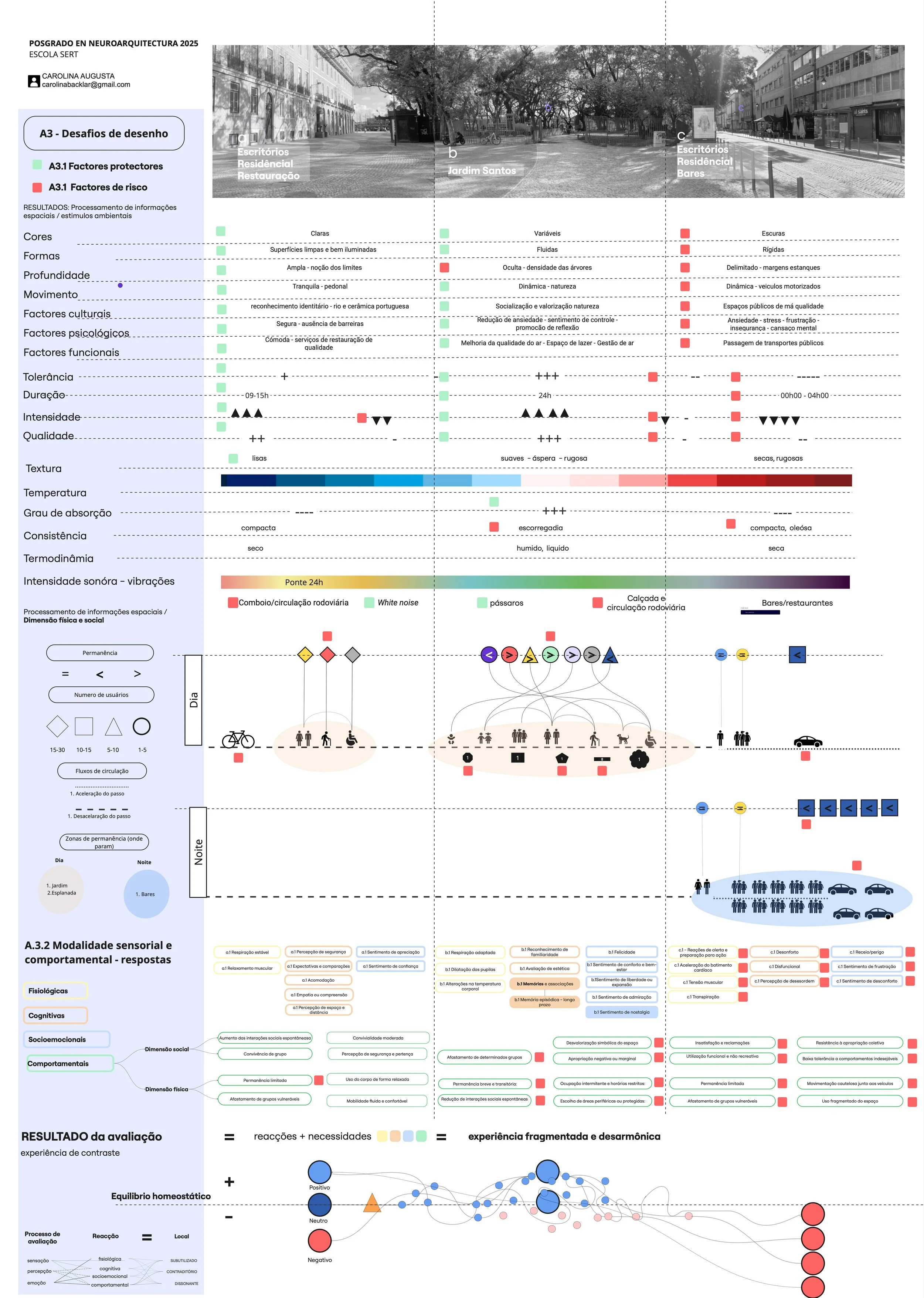Santos (re)union
This exercise aimed to identify urban design challenges based on the analysis of a specific user's experience in Largo de Santos (Lisbon), using sensory, behavioral, and social analysis.
From this, intervention strategies were selected and supported by scientific literature to enhance neighborhood relationships.
-
The perspective of a resident of Largo de Santos, was considered as a representative case to understand behaviour in the urban space. The profile research allowed the identification of physical, social, and cognitive needs, with a focus on multisensory analysis in its physical and social dimensions).
-
How to promote neighborly relationships in Largo de Santos, Lisbon.
-
To strengthen the relationships among members of the local community by turning the public space into a place of gathering, belonging, and inclusive social interaction.
-
Critical analysis of the user’s sensory and behavioral experience in the location.
Identification of risk and protective factors present in the space, based on the user’s responses to environmental stimuli.
Documentary research and review of scientific literature, aimed at understanding the existing spatial and social pathologies.
Formulation of design hypotheses and strategies supported by scientific evidence, focused on correcting imbalances and promoting social interaction among neighbors.
-
To develop intervention proposals that transform Largo de Santos into a more balanced, attractive, and functional space, fostering intergenerational encounters, sharing, and the strengthening of community ties — based on an empathetic and evidence-based reading of the user's experience.


